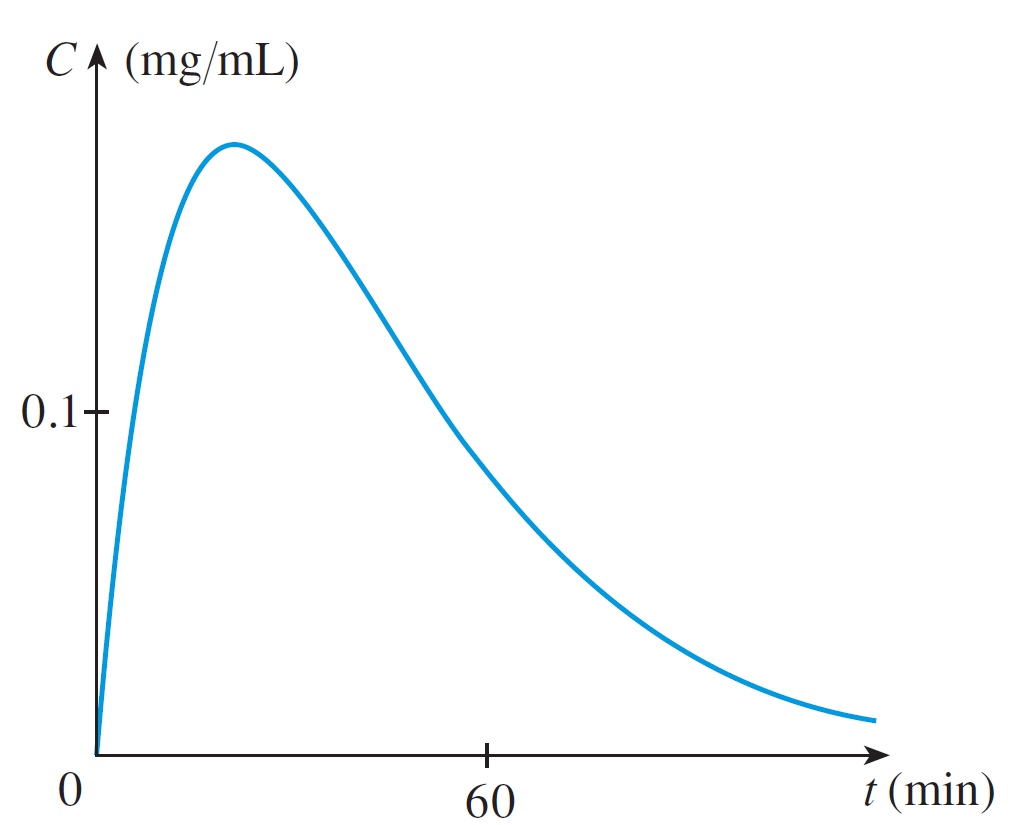3.1: Derivatives and Rates of Change
We will study a special type of limit called a derivative. These arise when we are looking at an instantaneous rate of change, the slope of a tangent line, or a velocity.
Tangents
This lecture note describes the intuition behind creating a tangent line.
We saw it was a limit. Here's the definition:
The tangent line limit is an indeterminate form. Here is an animation of the previous example:
Notice how the expression $f(x) - f(a)$ approaches $0$ and $x - a$ also approaches 0.
Because this limit is an indeterminate form, we need to simplify the expression before applying the limit.
In practice, it's easier to simplify the following equivalent expression of the slope of the tangent line: \[m = \lim_{h \rightarrow 0} \dfrac{f(a + h) - f(a)}{h}\]
The tangent line is sometimes called the slope of the curve because if you zoom in far enough, the curve almost looks like a straight line.
Instantaneous Rates of Change
If $f(x)$ is a function, we can analyze "on average" how much $f(x)$ changes over an interval $[a, a + h]$.
For example, a position function $s = f(t)$ gives the total distance traveled of an object moving in a straight line $t$ seconds after rest.
- How far have you travelled after one hour and two hours?
- How far did you travel between one hour and two hours?
Over the time interval $[a, a+h]$, the change in position is $f(a + h) - f(a)$. Thus the average velocity is \[\text{average velocity} = \dfrac{\text{total displacement}}{\text{total time elapsed}} = \dfrac{f(a + h) - f(a)}{h}\]
We want the instantaneous rate of change at $x = a$, or how fast the function is changing exactly at one $x$-value.
In the context of velocity, we can look at shorter and shorter time periods of the average velocity. This requires $h \rightarrow 0$. Thus we have the following definition:
Think of instantaneous velocity as reading off your speedometer in the car at one point in time!
Derivatives
Notice how the same limit \[\lim_{h\rightarrow 0} \dfrac{f(a + h) - f(a)}{h}\] occurred when we wanted to calculate a "rate of change" or a tangent line. This limit appears often enough so we give it a name:
The derivative can take on three interpretations:
- It is the slope of the tangent line at $x = a$.
- It is the "instantaneous rate of change" at $x = a$. For example:
- If $s(t)$ is a position function, then $s'(a)$ is the instantaneous velocity at the moment in time $t = a$.
- Think of this interpretation as how fast the heights $f(x)$ are changing at the $x$-value $a$.
- It is the slope of the curve at $x = a$. In particular, you should think of the tangent line as an "approximation" to the function $f(x)$.

How quickly is the BAC increasing after 10 minutes?
Solution: You are asked to find the instantaneous rate of change of $f(x)$ at $x = 10$.
This is equivalent to finding the slope of the tangent line at $x = 10$.
The slope of the tangent line is the derivative.
Thus the tangent line to $y = f(x)$ at $(a, f(a))$ is the line through $(a, f(a))$ whose slope is $f'(a)$.
The general equation can be described with point-slope form.